About the Tour
This 6-day Holi Festival Tour begins in Delhi and takes you on an extraordinary journey through some of the most sacred and vibrant destinations in India. Witness the spiritual energy of Mathura and Vrindavan, the iconic cities associated with Lord Krishna, as they come alive during Holi. Conclude your journey in Jaipur, the Pink City, which offers a fascinating cultural and architectural experience.
Expect colourful Holi celebrations, visits to ancient temples, and moments of serenity along the Yamuna River ghats, combined with Rajasthan’s rich heritage and breathtaking landscapes.
About the Destination
Mathura & Vrindavan:
Known as the sacred land of Lord Krishna, Mathura and Vrindavan are the epicenters of Holi celebrations. Every temple, street, and corner resonates with devotion and festive energy. Mathura is home to Shri Krishna Janmabhoomi, the birthplace of Lord Krishna, while Vrindavan is renowned for the Banke Bihari Temple and its iconic Phoolon ki Holi.
Jaipur:
Jaipur, the capital of Rajasthan, showcases the grandeur of Indian history through its forts, palaces, and temples. Known as the Pink City, it is a vibrant cultural hub with markets, architecture, and attractions like Amber Fort, Hawa Mahal, and Jantar Mantar.
Trip Highlights
- Holi Festival: Participate in grand and colorful Holi celebrations in Mathura and Vrindavan.
- Spiritual Sites: Visit sacred temples and ghats in Mathura, Vrindavan, and Jaipur, including Shri Krishna Janmabhoomi, Banke Bihari, Prem Mandir, and Galtaji Temple.
- Cultural Experience: Explore the historical palaces, forts, and markets in Jaipur and Mathura, experiencing the traditional Rajasthani culture.
- Unique Experiences: Be part of the lively Holi celebrations and witness devotional Aartis.
- Participate in the colorful Lathmar Holi and Phoolon ki Holi in Mathura and Vrindavan.
- Visit iconic temples like Shri Krishna Janmabhoomi, Banke Bihari, and Galtaji Temple.
- Witness the vibrant Aartis and immerse in spiritual serenity.
- Explore Jaipur’s historical landmarks, including Amber Fort and Hawa Mahal.
- Stroll through colorful markets in Jaipur for traditional jewelry and handicrafts.
- Enjoy comfortable accommodations and delectable meals.
- Travel in air-conditioned vehicles with experienced drivers.
- Experience Yatra Veda’s commitment to high-quality service and a 100% satisfaction guarantee.
Day 1: Arrival in Delhi
Travel Options:
- Flight: Arrive at Indira Gandhi International Airport, Delhi.
- Train/Car: Take a train or cab to Delhi if travelling from nearby cities.
Morning:
- Arrive in Delhi and check into your hotel.
- Freshen up and relax after your journey.
Afternoon:
- Visit Lotus Temple: A serene architectural marvel symbolizing the Bahá’í faith, offering a tranquil atmosphere for meditation.
- Explore Akshardham Temple: A grand temple dedicated to Bhagwan Swaminarayan, known for its intricate carvings, exhibitions, and spiritual ambiance.
Evening:
- Stroll around India Gate and Connaught Place, soaking in the city’s bustling charm.
- Enjoy dinner at a local restaurant serving North Indian delicacies.
Stay: Overnight in Delhi.
Lotus Temple
A masterpiece of modern architecture, the Lotus Temple is one of Delhi’s most serene and spiritual landmarks. Built in the shape of a blooming lotus, this Bahá’í House of Worship welcomes people from all faiths to meditate and seek inner peace. Surrounded by lush gardens and reflective pools, the temple’s tranquil ambiance makes it a perfect spot for relaxation and contemplation.
Akshardham Temple
One of the grandest Hindu temples in the world, Swaminarayan Akshardham Temple is a marvel of intricate carvings, spiritual storytelling, and divine devotion. Dedicated to Bhagwan Swaminarayan, this temple complex is known for its detailed sculptures, musical fountains, and exhibitions that depict India’s rich cultural and spiritual heritage.
India Gate
As the sun sets, a visit to India Gate offers a glimpse into India’s historical legacy. This towering war memorial honors the soldiers who sacrificed their lives during World War I.
Connaught Place
A short distance from India Gate lies Connaught Place (CP), the heart of Delhi’s shopping, dining, and cultural scene. With its colonial-era architecture, high-end stores, bustling markets, and famous eateries, CP is perfect for an evening stroll. Visitors can explore popular cafes, indulge in street food, or shop for souvenirs before calling it a night.
Day 2: Delhi to Mathura – Holi Festival Begins
Morning:
- Depart from Delhi to Mathura (approximately 3 hours by road or train).
- Check into your hotel in Mathura, the birthplace of Lord Krishna.
Afternoon:
- Shri Krishna Janmabhoomi: Visit the sacred site believed to be Lord Krishna’s birthplace, featuring a revered temple complex.
- Dwarkadheesh Temple: Explore this prominent Krishna temple known for its divine ambiance and stunning architecture.
- Take a serene walk along the Yamuna River ghats, soaking in the spiritual aura.
Evening:
- Participate in Holi Celebrations in Mathura:
- Experience the vibrant Lathmar Holi at Barsana, where women playfully interact with men using sticks.
- Witness the magical Phoolon ki Holi, where petals replace colors, creating a divine celebration.
Stay: Overnight in Mathura.
Shri Krishna Janmabhoomi Temple Complex
The most revered site in Mathura, believed to be the exact birthplace of Lord Krishna. Features temples, shrines, and a prison cell (Kansa’s dungeon) where Krishna was born. The complex hosts vibrant celebrations during Janmashtami and Holi, attracting thousands of devotees.
Dwarkadheesh Temple
A beautiful temple dedicated to Lord Krishna, renowned for its exquisite carvings and intricate architecture. Devotees flock here for the daily Aartis and vibrant festivals like Holi and Janmashtami.
Yamuna River Ghats
Sacred ghats like Keshi Ghat and Vichhupuri Ghat offer tranquil settings where Krishna is believed to have played his flute. Devotees can perform rituals, enjoy boat rides, or simply meditate by the river.
Day 3: Vrindavan – Holi Festival and Spiritual Exploration
Morning:
- After breakfast, head to Vrindavan (just 15 minutes from Mathura).
- Banke Bihari Temple: Celebrate Holi in this famous temple dedicated to Lord Krishna. The festive energy here is unmatched.
- Prem Mandir: Marvel at this beautifully crafted temple depicting Radha-Krishna’s divine love, surrounded by illuminated sculptures and gardens.
Afternoon:
- Rangaji Temple: Admire the unique South Indian architecture of this significant Krishna temple.
- Explore the sacred Yamuna River ghats, including the enchanting Vichhupuri Ghat, where Lord Krishna is believed to have played his flute.
Evening:
- Join the Holi Celebrations at Banke Bihari Temple or nearby temples.
- End the day by witnessing the Aarti at Banke Bihari Temple, a deeply spiritual experience.
Stay: Overnight in Vrindavan.
Vrindavan: The Land of Krishna’s Divine Love
Vrindavan, just a short distance from Mathura, is a spiritual hub filled with temples dedicated to Krishna and Radha. The town is steeped in devotion and comes alive during the Holi Festival.
Banke Bihari Temple
One of the most famous temples in India, dedicated to Lord Krishna in his child form (Banke Bihari). Known for its playful Holi celebrations, where devotees sing, dance, and throw coloured powders in joy.
Prem Mandir
A stunning temple with intricate marble carvings and beautifully lit sculptures depicting scenes from Krishna’s life. The temple grounds include gardens and fountains, making it a serene place for reflection.
Rangaji Temple
A South Indian-style temple, unique for its Dravidian architecture and a large water tank used for rituals. The temple celebrates Rang Panchami, a part of the Holi festival, with much enthusiasm.
Day 4: Vrindavan to Jaipur
Morning:
- Depart from Vrindavan to Jaipur (approximately 5–6 hours by road or train).
- Check into your hotel upon arrival in Jaipur.
Afternoon:
- Amber Fort: Explore this majestic fort, a testament to the grandeur of the Rajput Empire, offering panoramic views of Jaipur.
- Jantar Mantar: Visit the UNESCO-listed observatory featuring ingenious astronomical instruments.
Evening:
- Hawa Mahal: Admire the architectural beauty of the iconic “Palace of Winds.”
- Wander through Jaipur’s vibrant Johari Bazaar, known for traditional jewelry and crafts.
Stay: Overnight in Jaipur.
Amber Fort
A UNESCO World Heritage Site and one of Rajasthan’s most iconic landmarks. Famous for its artistic elements, including mirror work, courtyards, and the Sheesh Mahal (Hall of Mirrors). The fort also hosts a Sound & Light Show narrating the history of the Rajput Empire.
Hawa Mahal (Palace of Winds)
A magnificent palace with 953 intricately carved windows, designed to allow royal women to observe daily life and festivals. The palace offers stunning views of Jaipur’s bustling streets and markets.
Jantar Mantar
The largest stone astronomical observatory in the world and a UNESCO World Heritage Site. Includes instruments used to measure time, predict eclipses, and observe celestial events.
Day 5: Jaipur – Spiritual and Cultural Exploration
Morning:
- Galtaji Temple (Monkey Temple): Visit this ancient pilgrimage site with sacred springs and panoramic views.
- Birla Mandir: A stunning marble temple dedicated to Lord Vishnu and Goddess Lakshmi.
Afternoon:
- City Palace: Explore this magnificent blend of Rajasthani and Mughal architecture, featuring museums and royal artifacts.
- Jal Mahal: Enjoy the picturesque beauty of this palace situated in the middle of Man Sagar Lake.
Evening:
- Sound & Light Show at Amber Fort: Learn about Jaipur’s history through an engaging light and sound presentation.
Stay: Overnight in Jaipur.
Galtaji Temple (Monkey Temple)
An ancient pilgrimage site surrounded by hills and sacred water tanks. Dedicated to Lord Hanuman, it is home to a large population of monkeys, considered sacred. Visitors often bathe in the holy springs, believed to have healing properties.
Birla Mandir
A white marble temple dedicated to Lord Vishnu and Goddess Lakshmi. The temple features intricate carvings, beautiful idols, and serene gardens.
City Palace
A stunning blend of Rajasthani and Mughal architecture, housing museums and galleries that showcase royal artefacts. Visitors can explore courtyards, gardens, and the Chandra Mahal, which still serves as a royal residence.
Jal Mahal
A picturesque palace situated in the middle of Man Sagar Lake. While entry into the palace is restricted, visitors can enjoy its beauty from the lakeside or during boat rides.
Day 6: Jaipur to Delhi – Departure
Morning:
- Albert Hall Museum: Delve into Rajasthan’s history and culture at this architectural masterpiece.
- Sisodia Rani Garden: Relax in this ancient garden adorned with fountains and pavilions, surrounded by picturesque hills.
Afternoon:
- Depart for Delhi (approximately 5 hours by road) or Jaipur Airport for your return flight.
- Alternatively, take a train back to Delhi (frequent connections available).
Evening:
- Arrive in Delhi and proceed to the airport for your departure or check into a hotel if required.
Sisodia Rani Garden (Jaipur)
A beautifully landscaped garden with fountains, pavilions, and murals depicting scenes from Radha-Krishna’s life. Offers a peaceful retreat amidst Jaipur’s busy streets.
Inclusions:
- Accommodation in 3-star or higher hotels.
- Daily breakfast and dinner.
- All transportation is in air-conditioned vehicles.
- Guided tours for temples and attractions.
- Assistance for Holi celebrations and rituals.
Exclusions:
- Flights or transportation to/from Delhi.
- Entry fees for attractions.
- Lunch and personal expenses.
- Tips for guides and drivers.
Q- Can children participate in the Holi celebrations during the tour?
Ans. Yes, children can participate in Holi celebrations, but it’s recommended to supervise them, as the festivities can be lively and crowded. Use safe, natural colors to ensure their safety.
Q- What is the dress code for visiting temples during the holi festival in vrindavan?
Ans. It is advisable to wear modest and traditional clothing while visiting temples. For men, a kurta and pajama are ideal, and women can wear sarees, salwar suits, or long skirts with blouses.
Q- Will Yatra Veda provide protective gear for Holi celebrations?
Ans. While we recommend bringing your own protective gear like sunglasses, scarves, and caps, we also offer guidance on purchasing safe and natural colors locally.
Q- Are photography and videography allowed at the temples?
Ans. Photography policies vary by temple. Some allow photography in designated areas, while others may restrict it entirely. Always check with temple authorities or your guide before taking pictures.
Q- Is the itinerary flexible for senior citizens or people with mobility issues?
Ans. Yes, we can modify the itinerary to suit the needs of senior citizens or travellers with mobility concerns, including shorter walking distances and providing wheelchairs where possible.
Q- Are private guides available for personalized temple tours?
Ans. Yes, private guides with in-depth knowledge of the temples and their history can be arranged upon request for a more personalized experience.
Q- What safety measures are in place for the tour?
Ans. Yatra Veda ensures safety by partnering with trusted accommodations, providing clean and secure vehicles, and offering assistance throughout the journey. Our guides are trained to handle emergencies and ensure a hassle-free experience.
Q- Can I buy natural Holi colors at the destination?
Ans. Yes, natural and eco-friendly Holi colors are widely available in Mathura and Vrindavan. Your guide can help you locate trusted vendors.
Q- What type of meals will be provided during the holi festival tour?
Ans. The tour includes vegetarian meals, with a variety of local delicacies and festive treats. Special dietary preferences (e.g., vegan, Jain food) can also be accommodated upon prior request.
Q- Is there free time during the itinerary for personal exploration?
Ans. Yes, the itinerary includes free time in destinations like Jaipur’s local bazaars, Yamuna ghats, and temple surroundings, allowing you to explore, shop, or relax at your own pace.

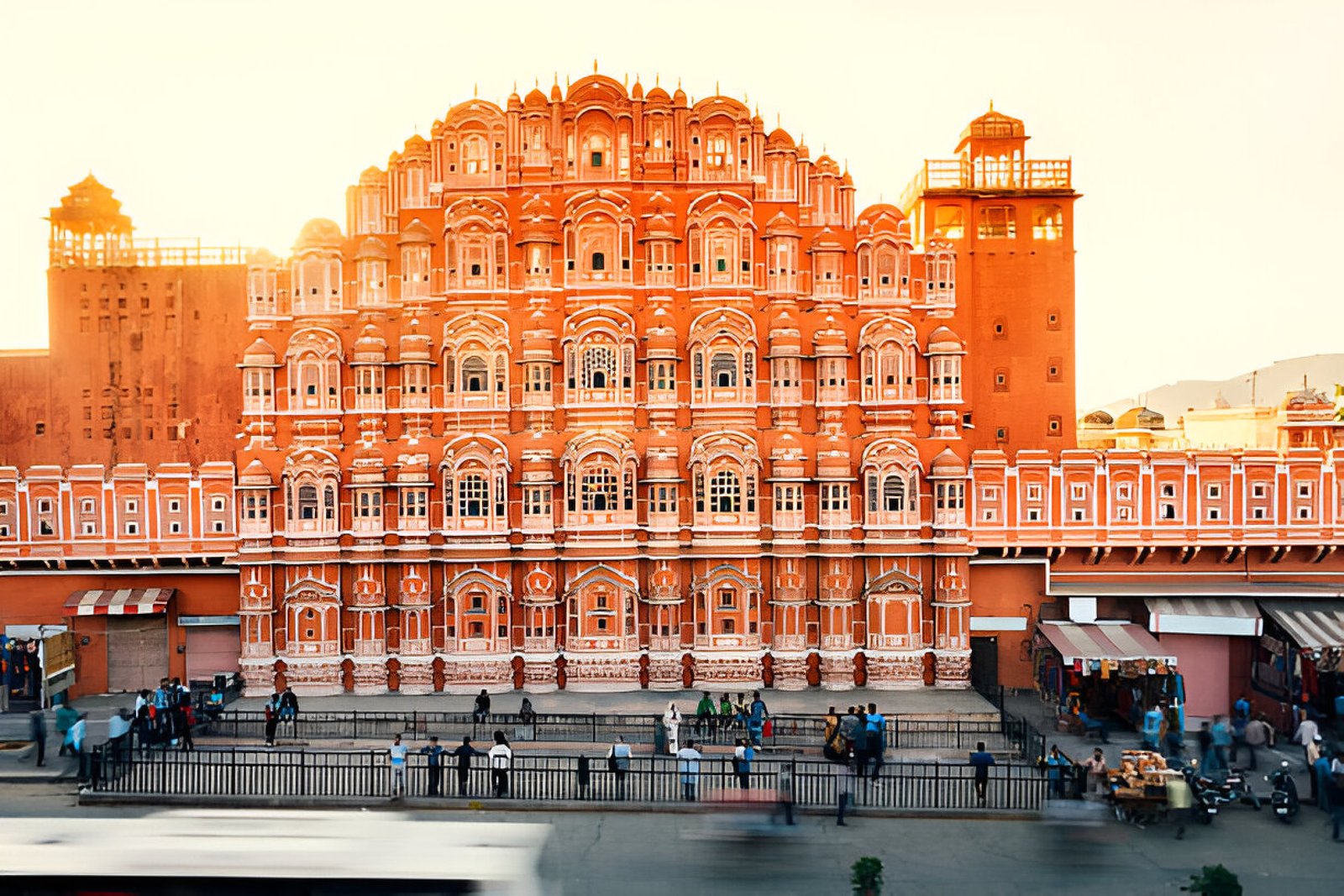
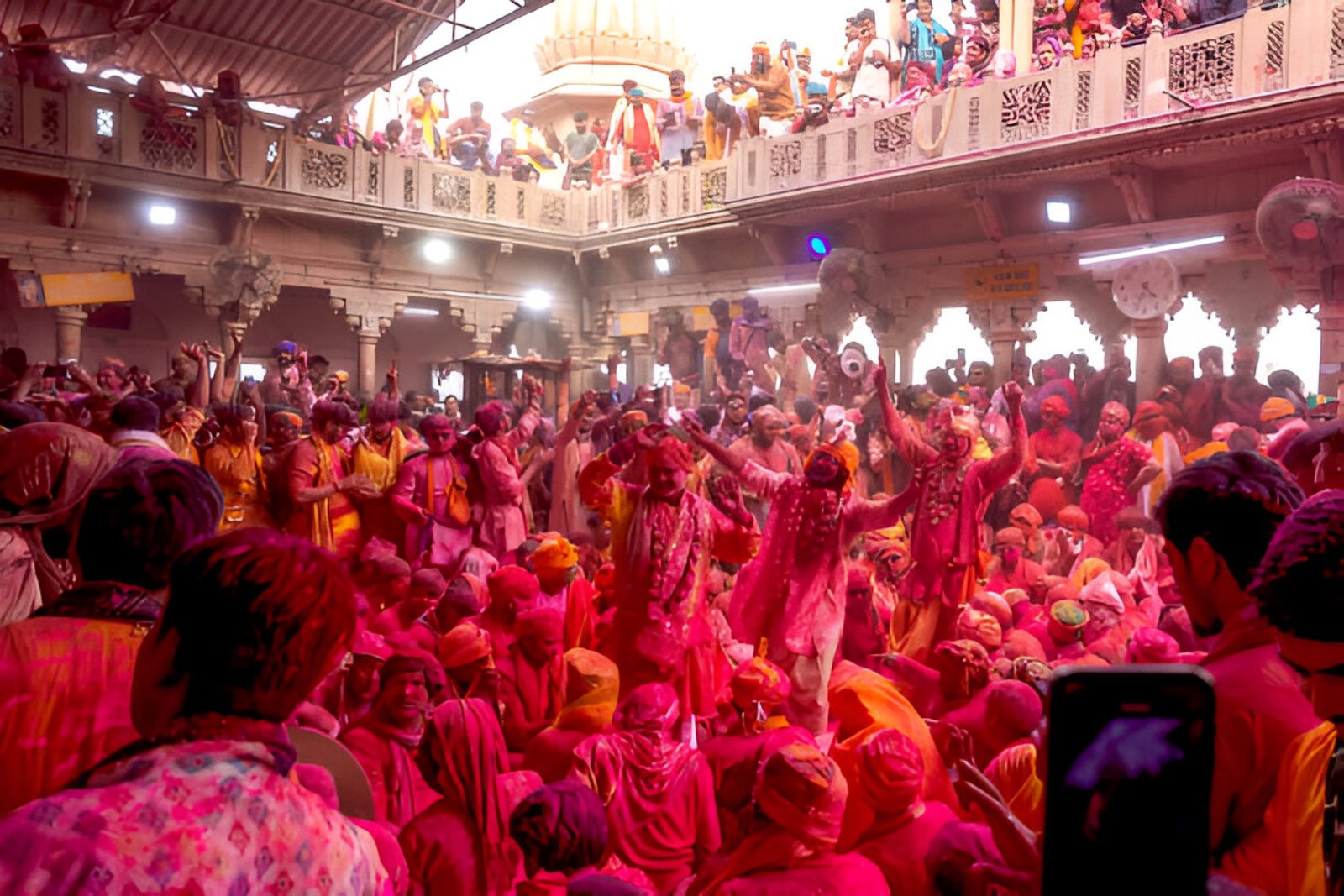
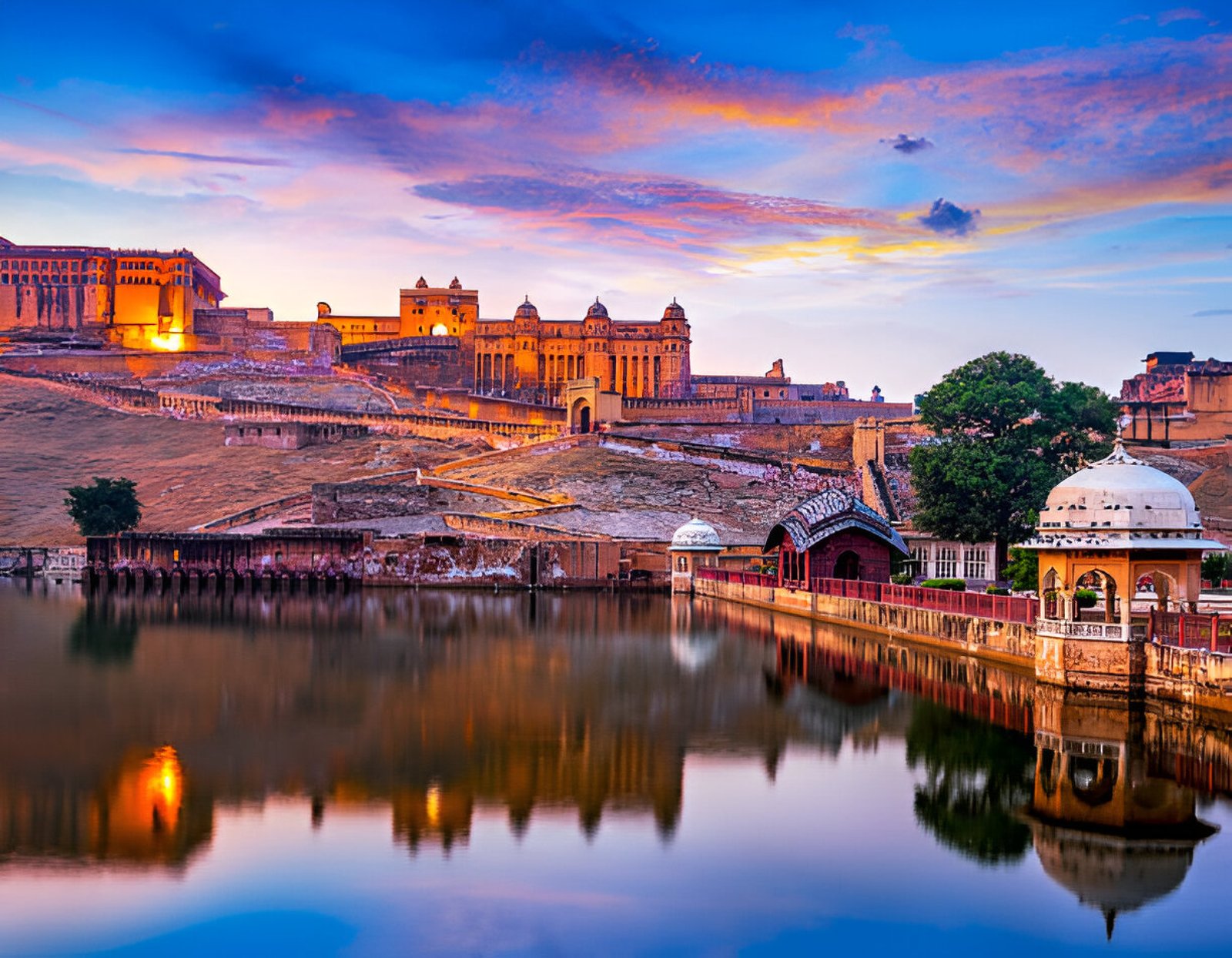
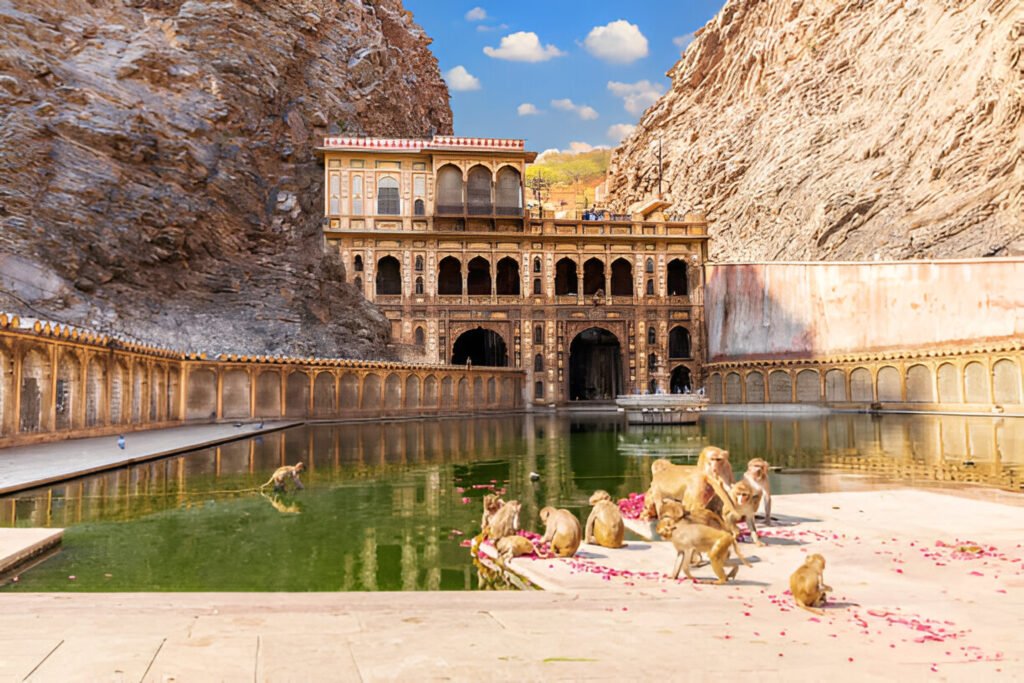

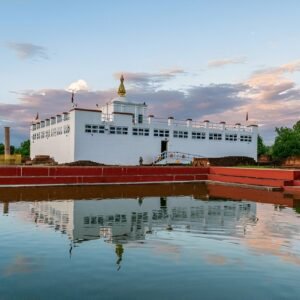
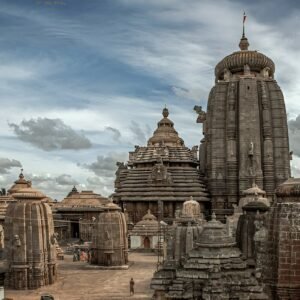

Reviews
There are no reviews yet.